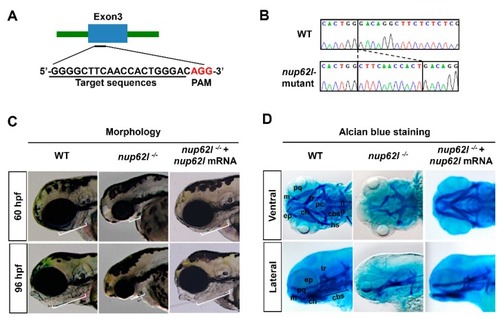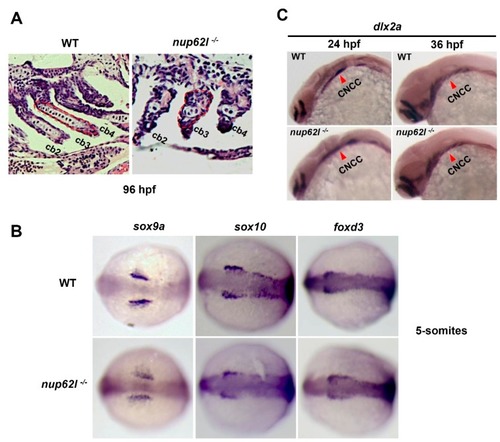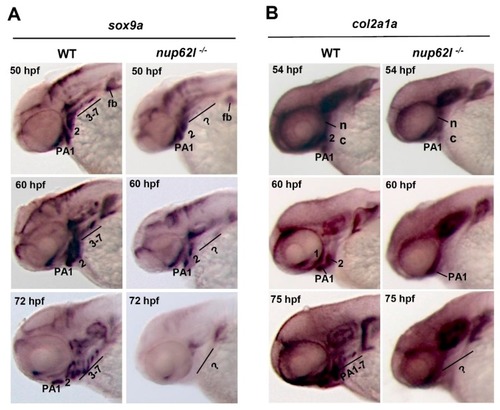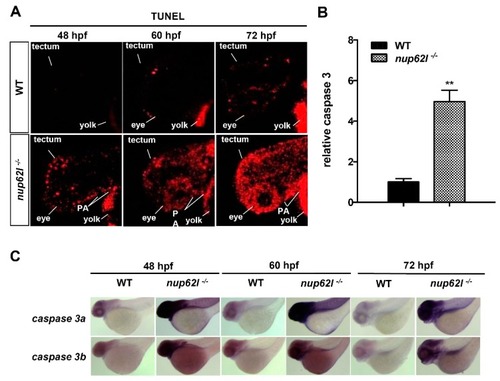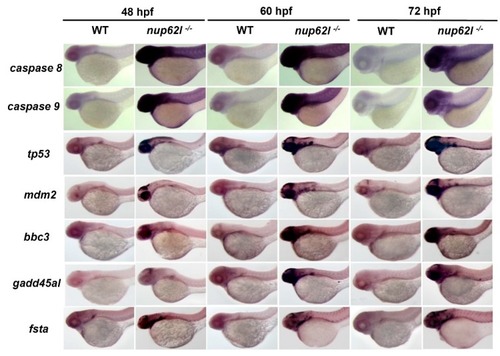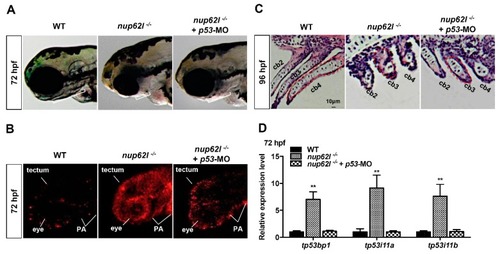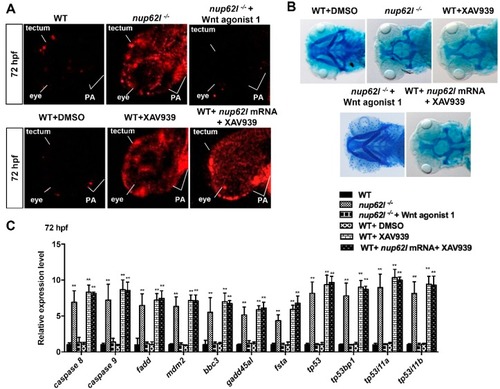- Title
-
Nucleoporin 62-Like Protein is Required for the Development of Pharyngeal Arches through Regulation of Wnt/β-Catenin Signaling and Apoptotic Homeostasis in Zebrafish
- Authors
- Yang, X., Li, X., Gu, Q., Li, Q., Cui, Z.
- Source
- Full text @ Cells
|
Loss of Nup62l led to severely impaired formation of PA cartilages. ( |
|
Specification and migration of CNCCs were unperturbed by loss of Nup62l. ( EXPRESSION / LABELING:
PHENOTYPE:
|
|
Nup62l was essential for condensation and differentiation of pharyngeal chondrogenic progenitors. WISH expression patterns of markers EXPRESSION / LABELING:
PHENOTYPE:
|
|
Loss of Nup62l induced extensive apoptosis in the impaired PA region. ( EXPRESSION / LABELING:
PHENOTYPE:
|
|
Loss of Nup62l activated intrinsic and extrinsic apoptotic pathways. WISH assays showing lateral views of the expression of various apoptosis-related genes ( EXPRESSION / LABELING:
PHENOTYPE:
|
|
Activation of p53-dependent apoptotic pathway contributed to the defective formation of PA in EXPRESSION / LABELING:
PHENOTYPE:
|
|
Suppression of Wnt/β-catenin signaling by Nup62l deprivation activated multiple apoptotic pathways. ( EXPRESSION / LABELING:
PHENOTYPE:
|

